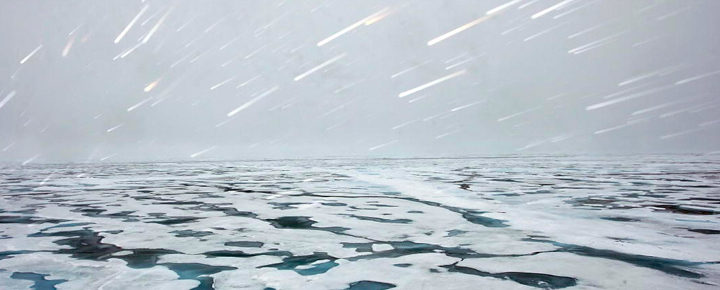This summer, while America was suffering through a mega-drought that plunged half the country into a state of emergency, and India was experiencing the largest blackout in history, a group of Chinese scientists were undertaking a remarkable voyage. Aboard the world’s largest icebreaker, the Xue Long, (or ‘Snow Dragon’) they charted a course through what was once called the “Northeast Passage”, over Russia through the record-setting melting Arctic sea ice, finally docking in Reykjavik, Iceland.
China is obviously not an Arctic country, but that has not prevented it, like many other nations, from taking a keen interest in the region – scientifically, diplomatically, and commercially. In fact, the Chinese seem intent on playing a leadership role in this part of the world, particularly in Iceland, which has vast geothermal and hydroelectrical capacity (much of it currently used, controversially, to power aluminum smelters). In the capital of this small country of 320,000 people, the Chinese are constructing a truly massive embassy, with room for up to five hundred people. (The American embassy, presently the largest, holds about seventy.)
Why build something so big? Partly, to broadcast China’s presence, and partly to act as a basis of operations for the whole region, particularly those involving access to rich mineral and oil and gas resources of nearby Greenland. These may include up to 25% of the world’s reserves of rare earth metals, which are used to make magnets used in everything from cell phones to wind turbines to precision-guided munitions. (Much to the chagrin of folks at the Pentagon, China currently has about 95% of the world’s current supply.)
Indeed, plans are already being drawn up to open a huge iron ore mine in Greenland that could, overnight, swell the population of the country by 4% with Chinese workers – and that’s just from one project alone. This poses a challenge to the country’s 57,000 citizens – many of them indigenous Kalaallit – just as it does to their Icelandic neighbors (and Africans, and many others): how to admit the interests of the insatiable global extractive economy into their country in a controlled way, while trying to conserve one of the world’s pristine – and globally essential – ecosystems.
Amid these moves in a new ‘great game’ in Arctic energy, materials, and transport, something can easily be lost – the vastly greater global importance of the disappearing Arctic ice itself. The Chinese scientists aboard the Snow Dragon were there because, much like every nation – including the United States – China has to worry both about finding and extracting vast quantities of natural resources to power its growth, and about the consequences – in the form of melting ice, rising sea levels, and threats to its coastal cities – of those very extractive processes. (These threats don’t just include increasing risk from severe weather events, but also from things like the contamination of drinking water by rising seawater.)
The health of the planet’s ice is implicated in all of this, as Iceland’s President Olafur Grimsson shared with me a few days ago on a visit to Reykjavik. In our wide ranging conversation, he mentioned two things that deeply impressed me: first, that, in his international travels, nations as far away as Singapore and South Korea – realizing they have a stake in what he calls the ‘Global Arctic’ – continuously express interest in joining the Arctic Council, an intergovernmental body that addresses issues faced by regional Arctic governments and their indigenous people.
Second, President Grimsson also suggested a compelling agenda-item for Obama’s second term: convening an international Summit to directly address our shared, civilizational interest in the State of the Ice, and to generate what he called an “AHA” moment, which stands for the Arctic, Himalayas and the Antarctic – the three major ice centers on the planet. You can read about both of these and other compelling ideas in this transcript of a terrific speech he gave on the subject at the Arctic Imperative Summit, held earlier this year in Alaska.
It’s clear we need a moment of global focus and rule setting, or the new Wild West may be the Wild North.
Image credit: United Nations Photo